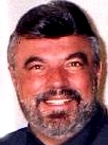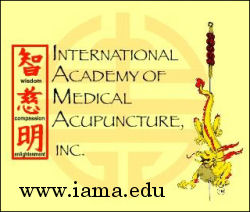Acupuncture & TCM Articles

Acupuncture Articles
by John A. Amaro L.Ac., Dipl.Ac.(NCCAOM), DC
 Dr. Amaro is an internationally known author, lecturer and practitioner beginning his practice of Acupuncture and Chiropractic in 1971. He has led 13 diplomatic Acupuncture study tours of The People's Republic of China escorting more than 500 doctors and practitioners. He has personally studied Acupuncture in nine separate Asian nations. Dr. Amaro is an internationally known author, lecturer and practitioner beginning his practice of Acupuncture and Chiropractic in 1971. He has led 13 diplomatic Acupuncture study tours of The People's Republic of China escorting more than 500 doctors and practitioners. He has personally studied Acupuncture in nine separate Asian nations.
He has received Certification in Acupuncture through the Columbia Institute of Chiropractic in 1973. This was one of the first Acupuncture postgraduate education programs for physicians in North America commencing in 1972.
He has been certified by the Waseda Acupuncture College in Tokyo, Japan in 1974 and graduated from the Chinese Medical Institute, Kowloon, China in 1976. He had previously taken postgraduate studies at the Tai Chung Medical School Taipei, China 1973.
The Most Important Notes of Acupuncture -- Part I-A
John A. Amaro L.Ac., Dipl.Ac.(NCCAOM), DC
Yes, I was really serious about clipping Part I of this column and saving it for future reference. To make my point perfectly clear, we are repeating the graphics of the first four meridians, namely LU, LI, ST, and SP.
For those of you in North America, you have seen these graphics in the September 12, 1990 issue of Dynamic Chiropractic. For those in the rest of the world, this is your first opportunity. Please heed my advice -- clip and save this column. Don't miss an issue of Dynamic Chiropractic. The information presented in this column alone will undoubtedly, positively alter the course of thousands of your patients' lives.
What we are presenting here and throughout this series is the classic "meridian" pathway as described by the ancients, 5,000 or more years ago. The graphics presented here are unique in that they also show the "internal" meridian pathway illustrated by a broken line as well as the classic pathway shown by a solid line.
Perhaps one of the most significant rules of acupuncture is: A Meridian Affects What It Is Named After Or Where It Courses To (or through). It is imperative you take a few minutes, analyze that last statement, and become more than familiar with each of the pathways discussed.
To affect a meridian, one may simply stimulate (non-invasive is fine), the source point on the meridian which you will find shown in the descriptions. For example, it is possible to affect an eye condition by stimulating the source point of the stomach (ST42) as the meridian flows just under the eye. An inner knee problem could be possibly treated by SP3, as well as surround the dragon (points on and around the knee).
Sounds too easy? Sorry! Obviously there are more rules to learn, however, these will get you started with a significant number of successes.
Do these "meridians" physically exist? I seriously doubt it. Researchers have been unsuccessful to physically display the "meridians," however, they likewise have been unsuccessful in physically producing beta, gamma, radio, as well as other "waves" known to exist. I personally feel the mechanism of acupuncture/meridian therapy affects the electromagnetic flow of the body through the "meridian waves" of the body. I do not stand alone regarding that thought even though I just now coined the word "meridian wave." I kind of like it!
Remember to save this article and look for Part II in four weeks.
|
